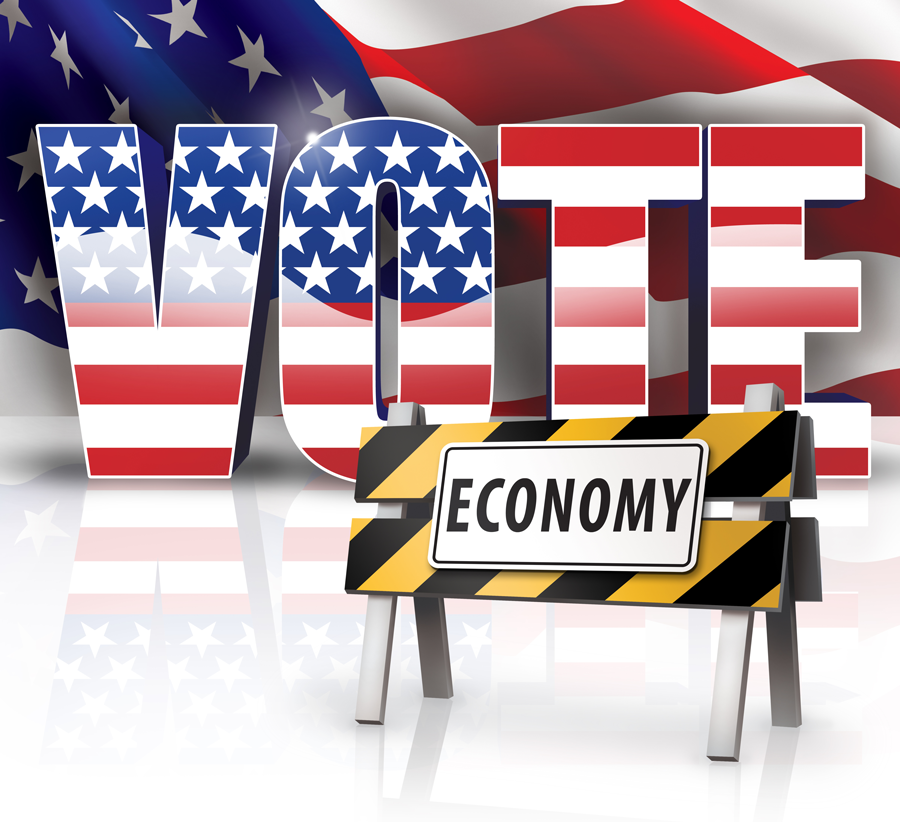For investors, perhaps the tepid reaction of equity markets to the election of Donald Trump was of equal or greater surprise than the upset election itself. I had to talk just one client off an emotional ledge late election night, and as of today, his impulse to “Sell everything” (from which he backed away) proves the value of having a caring financial counsel to offer perspective.
I’m grateful that today is not one in which I must explain to worried investors that the value of their accounts has plummeted while reminding them that their holdings are of excellent quality. Having lived through financial market gyrations since the mid- ‘70’s, the lesson learned is to cling to quality investments, watch mega trends and demographics and stay as unemotional as possible. So far, so good!
Going into the election, there have been excellent economic reports, noting that our American economy is growing, and that jobs are plentiful and there is little sign of excess that leads to a recession. For now, the pulse of the American economy is healthy. So, questions abound at this historic juncture: Are we on the verge of another leg higher for equities? Are interest rates going lower or higher? What is the outlook for inflation?
It is significant that President-elect Trump will have a Republican Congress with which to work. Assuming he can maintain cordial personal relations with the legislature, we may see a return to Reaganesque approach to our economy: a reduction in corporate and individual income taxes. Reigning in of environmental rule making, friendliness to construction, energy development and a strong resistance to foreign acquisitions of US companies. If the new regime follows through and reduces corporate tax, there is a good chance we will see a massive repatriation of corporate cash stashed in bonds and banks overseas. This could mean that companies like Apple, Google, Microsoft, Pfizer, IBM, Merck, Alphabet (Google), Johnson & Johnson, Cisco and Exxon Mobil will choose to redeposit into US accounts. In turn, a significant amount of this newly available cash, may well be employed raising dividends and buying in shares, both supportive to higher stock prices.
Infrastructure spending is likely to be a high priority in the new administration (as it would have been for a Clinton administration). Given the support of a Republican Congress, we may see meaningful stimulus. Rather than massive Federal government make work programs, I would guess business will be offered tax credits for modernization of plant and equipment and state and local governments some sort of matching grants for infrastructure improvement. We are already witnessing a positive reaction for affected companies as early as the first half of 2017 (in fact, some stocks like Eagle Materials and Martin Marrietta Materials (MLM) popped upward this morning). Most economists agree that Federal spending or support for state level infrastructure build would maintain high employment and even kickstart our economy into a higher gear.
Notably, the energy complex is celebrating, continuing a rally that began in the first quarter. The “environmental” extremists who think they can accelerate alternative energy adoption by blocking oil pipeline development are about to fold their tents. At the same time, a Trump government is likely to make more Federal land available for drilling and hydraulic fracturing.
It is to be noted that long term interest rates, the thirty-year US Treasury Bond, soared this morning over 2.00% while intermediate term bonds, seven to ten year maturity, fell sharply in yield. The markets seem to be predicting a hiatus in planned interest rate increases for the near term but a return to higher inflation, and/or soaring Federal debt going out a few years. This would certainly fit if the economy booms under a combination of business-friendly taxes and increased government spending for roads, bridges, subways, high speed internet, etc. If U.S. Productivity can be sparked higher, which is against its current declining trend, then future inflation may be kept manageable. While recent inflation has struggled to rise above the Federal Reserve Board’s target of 2%, I suspect we will run closer to 3% by the end of Trump’s first term. Immigration reform, that is, limitations on immigration could prove a real drag. Many Trump supporters clamor for a return to the days when there were plenty of blue collar job available, jobs that have disappeared overseas or due to technology. Conventional thinking is that such jobs are unlikely to appear suddenly under a Trump administration. Perhaps infrastructure spending will provide new jobs, but some economists worry that the anti-immigration approach will limit not just uneducated immigrants from south of the border, but also highly skilled technicians from places like India who are needed by tech companies.
Looming over all decisions that the Congress and President make, but not discussed during the recent campaign, is how to fix government entitlement programs: Medicare is gobbling up an ever greater share of the Federal budget, Social Security is due to run reduce promised benefits in about 13 years. Meanwhile, in recent years, veterans’ benefits have been expanded as have payments to help states participating in Obamacare. This massive fiscal train wreck, predicted some thirty years ago is fast running out of track and must be addressed by anyone who occupies the White House. Paul Ryan is aware of this situation. If he can keep his Republican House majority in line (and if can keep the job of House Speaker), we may see some meaningful reforms to entitlement spending. Yet it is difficult to see these promised social welfare benefits sustained without a tax increase somewhere. Hilary Clinton was clearly planning to raise taxes on the “wealthy.” The Republicans have embraced an Arthur Laffer belief that lower tax rates mean increased tax revenues. Frankly, I am skeptical. Supply Side economics does increase government top line revenue. Yet, it is difficult to conceive that tax revenue can increase sufficiently to offset the gusher of money flowing out to retiring Baby Boomers and their parents’ generation, many living well into their ‘80’s or beyond.
The markets’ confidence will depend greatly on who the President – elect chooses to handle day-to-day financial affairs, such as Treasury Secretary, Office of Management and Budget and appointees to the Federal Reserve Board. The markets will also be looking closely to see if Congress, which encompasses many divisions, can unite to pass legislation supportive of American businesses without initiating trade barriers that lead to a repeat of the Smoot-Hawley effected trade war, a major contributor to worldwide depression in the 1930’s.
Many clients own preferred stocks, among our best performers this year. Many have reacted with 2 to 3% price declines today. This is likely consistent with a sharp increase in the thirty-year T-bond yield, as preferred stocks have long maturity dates. While none have fallen below par and all we hold have superior yields, I will be watching these closely, as they are potentially vulnerable to any sustained rise in long term interest rates.
The immediate risk, in my view is decision paralysis. Investors and corporate managements may all defer new projects and investment pending a clearer view. This may lead to a slowdown of activity that will appear by mid-2017.
We will be watching and ready to advise our clients.

